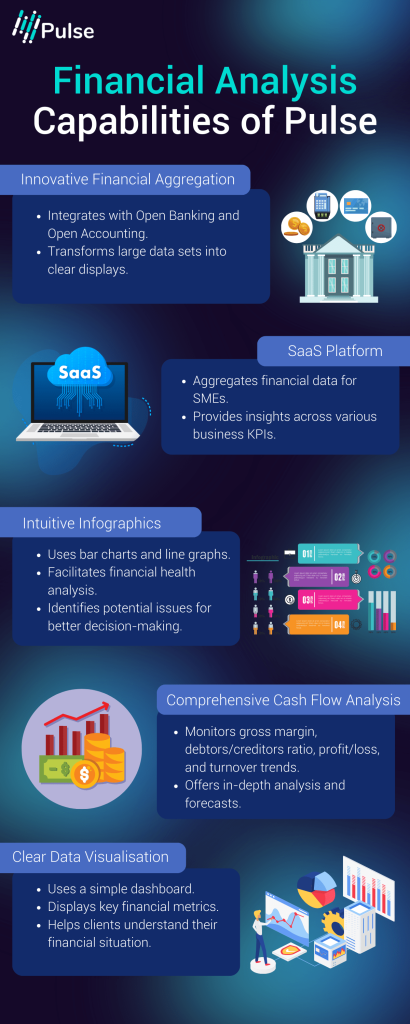As technology evolves in financial markets, it’s hard to imagine the days of financial planning and portfolio management without spreadsheet software, charting software, and other tools that are de rigueur now.
Research by Financial Planning in 2021 revealed that 93% of financial advisors admitted to technology as playing either a critical or very important role for them. More recently, a survey by SmartAsset reported that 57% of advisors already use AI or have expressed interest in it.
Newer technologies are making it easier for businesses, advisors, and individuals to understand and manage their investments and make informed decisions.
Role of Financial Advisory Tools
Independent advisors, registered representatives, and accountants have come to rely on sophisticated financial advisory tools to help them devise appropriate investment and retirement plans for clients. They also have many other tools and apps at hand to handle most other parts of their practices.
Financial advisory tools can also be considered an aid for small and medium enterprises (SMEs), as they encourage maintaining financial health. These tools are designed to ease financial advisory by guiding individuals, financial advisors, and businesses in running their financial activities.
They are adept at budgeting, forecasting, investment analysis, tax planning, and risk management, aiming to ensure that users can make informed decisions and run their processes smoothly toward the attainment of financial goals.
Types of Financial Advisory Tools
| Types | What They Do | Why They Are Needed |
| Aggregation Tools | It is a data management tool that collects all the various types of data, such as bank details, investment accounts, and credit cards, into one platform. | Facilitates financial advisors to curate all the essential data in one place to better understand, analyse and provide tailor-made solutions and suggestions to achieve financial goals. |
| Risk Management Tools | It provides a better view of a business’s financial position, allowing advisors to understand the risk-bearing appetite and the level of investment risk in the portfolios they build. | This tool empowers advisors with an understanding of their client’s risk tolerance capacity and yields significant profits by matching their risk tolerance with a portfolio. |
| Budgeting and Personal Finance Tool | These tools help track expenses, create budgets, and provide insights into personal spending habits. | Assist with managing finances by providing a clear view of where their money goes, identifying areas for savings and ensuring financial goals are met. |
| Financial planning software | A comprehensive tool helps to plan, manage and track investments and assets. | Enables advisors to offer tailor-made solutions and suggestions encouraging strategic decisions and financial well-being. |
| Market analysis | Helps track the constant movement of financial markets. | This software helps advisors study, analyse, and forecast market movements, enabling them to make more efficient decisions. |
Benefits of Using Financial Advisory Tools
Some of the benefits of using financial advisory software for SMEs:
- Accurate tracking of revenue against costs while cash flow is efficiently managed to meet budgets and automated reporting.
- Empower decision-making by presenting data-driven insights that facilitate forecasting while reducing costs through automation.
- Advisors can assist SMEs with cash flow analysis, identify risks and advise on mitigation, ensuring compliance with the relevant rules and regulations while supporting strategic long-term planning.
- Demonstrate financial health to lenders, assist in accurate business valuation, and facilitate better collaboration with financial advisors.
- It assists with insurance planning. Financial advisory tools can help mitigate risk by providing a list of specific policies that fit best for the situation, such as injury, customer property damage, or libel and slander lawsuits.
- Offering employees benefits such as retirement plans is a great way to minimise turnover.
- They help manage a business’s investment portfolio before and after any major business event, be it a merger, acquisition, or expansion. They advise on the best available investment strategies and asset allocation derived from risk profiling of investors towards the optimisation of portfolios.
Financial Analysis Capabilities of Pulse

Pulse’s innovative financial aggregation solution for accountants, business owners and brokers can be integrated with Open Banking and Open Accounting software, transforming large data sets into easy-to-understand displays. Our Software-as-a-Service (SaaS) platform aggregates financial data for SMEs, delivering small business financial intelligence to entrepreneurs seeking valuable insights across numerous business KPIs.
Pulse presents data through intuitive infographics such as bar charts and line graphs, so accountants can easily analyse a client’s financial health and identify potential issues. They can also present graspable data for both the accountant and their clients to make better business decisions.
Pulse is an excellent example of a data visualisation tool that provides a clear and concise view of a business’s financial standing. It leverages a basic and easy-to-understand dashboard to display reports of your client’s key financial metrics, meaning they can better comprehend their financial situation when viewing the infographics.
Contact us at info@mypulse.io to book your demo and discover how our platform can drive your business’s expansion.

















